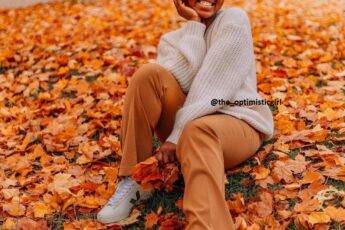A Beginner’s Guide to Branded Apparel

Let’s talk about branded apparel, also known as clothing that showcases something related to your company, such as its name or logo. It’s easy to put anything on a piece of clothing, but when it comes to your business, it must be top-notch. Think high-quality, from the design’s look to the fabric’s feel.
Read on for beginner tips for deciding on and creating your branded apparel.
Buy the apparel in bulk
Buying bulk clothing is the most affordable way of creating branded apparel. For example, purchasing the Bella + Canvas unisex raw seam crew pullover is less expensive when purchased wholesale than what you would pay for similar tops at retail price.
Typically, the more pieces you purchase wholesale will be less costly. However, double-check that with each wholesaler you’re considering hiring. See if you qualify for discounts, such as if you’re a new customer or buy a particular style or quantity; on-sale or promotional items may also be an option.
Choose your audience
First, determine your target customers. You can give it out to your employees as a perk, use the items as part of a work uniform or for volunteering, use it to give away in a contest, or you’re going to sell the pieces online or in your brick-and-mortar store. In some cases, it might be for more than one reason.
Knowing who your audience is can help you determine the type of clothing to buy and how many of each you’ll need. For instance, if you’re getting apparel for your employees, you already know a minimum of how many pieces you’ll have to buy.
Choose the sizes
Once you know who will wear your branded apparel, you can choose the sizes. It can be easy when dealing with employees; you only have to ask them what sizes they want. Sometimes, selecting sizes can be tricky without knowing your intended demographic.
Should you offer the apparel in your store, provide a range of sizes to appeal to all your customers. You want to avoid having much leftover clothing without running short on the needed pieces. Therefore, it is crucial to identify more standard sizes and prevent a vast collection of very small or more robust sizes if those do not fit your customer’s requirements. In addition, purchasing extra inventory that does not sell will become frustrating, require excess storage, and hurt your profit margins.
The most popular shirt sizes tend to be medium and large, so have extra of them on hand if you opt to go with tops. A good wholesaler offers a vast array of size options, so once you determine how many articles of clothing you’ll require, you can start deciding how many of each size you feel you will need.
Determine the purpose of the apparel
There are several reasons you may consider branded apparel. Having a purpose behind buying it rather than purchasing it to have it available can help you decide.
For example, suppose you want to buy apparel for your employees as part of their summer uniforms. Then, you will unlikely purchase heavyweight long-sleeve shirts or attire composed of material that does not support breathability.
On the other hand, if you’re interested in selling limited-edition designs in your store and have a particular graphic in mind, the apparel you select must complement it and vice versa, including the color scheme and material composition to appropriately apply the intended graphic through screen printing or direct-to-garment printing.
Acknowledging its purpose lets you narrow down the type of clothing during the selection process. It can also help you determine when to place an order. Buy the clothes as soon as possible so you have time to place the order, receive it, and ensure their accuracy.
Pick branded apparel people will wear
People won’t want to wear branded apparel (or be happy if they have to) that’s not attractive, well-made, or comfortable. Although one or two people may have the final say in the look of the branded apparel or what type to buy, it’s important to remember the garment’s intention.
For instance, if the recipients, such as employees, have to sport clothing that they deem unflattering and unattractive, it will only do little to boost their morale or impact their job performance.
If you’re ordering the clothing to sell, buy pieces that have mass appeal and are as attractive and flattering as possible. You don’t want to spend money on branded apparel only to have it sit on the shelf because many don’t like the look of it. Keep the recipients in mind during every step of the decision-making process.
Consider the design
The design is one essential aspect of branded apparel. Of course, you already know the basics: your company’s name, the logo, quote, motto, or saying associated with your business. However, there’s more to it than that.
You have to determine how big you want the design, its placement, the color of the print, and the clothing’s color. Every aspect needs to complement the other perfectly.
For instance, let’s say you want to create a branded t-shirt with a red logo; opting for a red tee won’t work with your desired logo. However, putting it on a white top will make it stand out. Likewise, should you want a motto in large letters and choose between putting it on pants or a hat, the former will give you the space you need.
Offer different varieties
You can choose multiple types of branded apparel, whether to sell or give away. Wholesalers offer many options from which to choose, including t-shirts, hoodies, joggers, shorts, hats, and tank tops. Depending on your budget, purpose for ordering, audience, and design concept, you should consider buying more than one so you have various items to offer.
If you need help deciding what branded apparel to purchase, take a poll and let others have a say in what you buy. For garments meant for your employees, send a poll out to them for their opinions.
Should you want to sell or give away the clothing, such as for a promotion, post a poll on your social media pages and let customers take a vote. There are no better opinions to get than of those who will wear the clothing.
Share via:





Leave a Comment